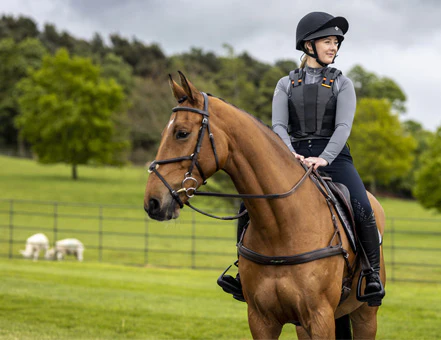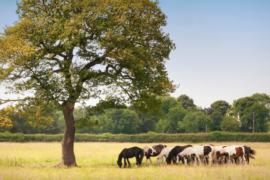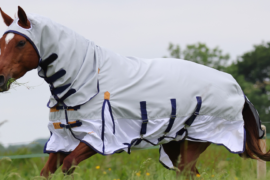Body protectors are certainly a key piece of safety equipment in the equestrian world and serious consideration should always be given as to whether you require one for the discipline you ride in.
Designed to protect, body protectors take the impact away from the rider’s body during a fall by absorbing the energy created. Body protectors have progressed since their initial production and they’re now created with lightweight materials that mould to the rider’s form. These modern designs provide optimum movement and comfort in the saddle alongside the all-important protection aspect.
What are body protector standards?
BETA’s standards and certification marks have certainly set a benchmark for safety in the equestrian world and each standard is suitable for different disciplines. Body protector standards are actually related to the thickness of the foam used in the creation. It’s very important to highlight, no body protector can prevent serious injury, however it can certainly improve safety and reduce the severity of potential injuries.
Level 1 – level 1 body protectors provide a lower level of impact protection – these are mainly suitable for licensed jockeys and NOT suitable for general riding or competitions.
Level 2 – level 2 standard offers a lower than normal level of protection. BETA consider this suitable for general riding when in very low risk situations but it should NOT be used for riding on roads (or other hard surfaces), jumping, riding a nervous/young horse or if the rider is inexperienced.
Level 3 – this level is considered suitable for general riding and competitions. These garments should bare a minimum of BETA 2009 Level 3 or be labelled as BETA 2019 Level 3. These standards are in date currently and both offer the same standard of protection. It is important to point out that most organisations have indicated that the BETA 2009 Level 3 will be valid until 2024 – thereafter the 2018 Level 3 will be required.
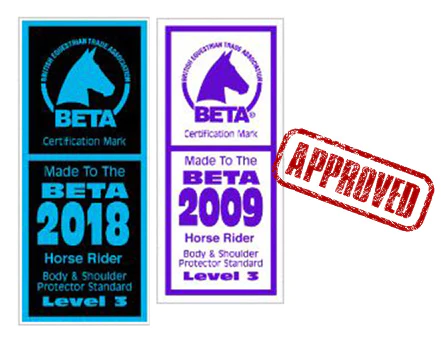
Manufactures must re-assess their body protectors on an annual basis to ensure they are quality assured so you can rider with peace of mind knowing your body protector will help to protect you should you ever need it.
Here at R&R Country we only sell BETA’s Level 3 body protectors – all body protectors purchased in-store come with a complementary fitting service to ensure your body protector is fitting you right.
Fitting a body protector
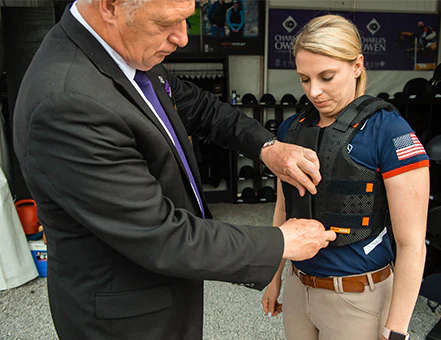
A poorly fitting body protector will not offer the protection a rider needs, this is why the correct fit is paramount for rider safety. Here at R&R Country, we highly recommend coming in-store to be fitted by one of our BETA trained/qualified staff members – they can ensure you get the best fit and the body protector that is right for you.
Often body protectors can feel stiff when you first put them on – don’t let this put you off! Body protectors will mould to your shape (with your body heat) after a few minutes of wear. When fitting a body protector we look for:
Secure Fit – all body protectors must fit securely to avoid movement in the event of a fall/injury.(BETA)
Coverage – this is also a key feature we consider when fitting a body protector. The body protector should reach the top of your sternum (front) and then reach the prominent bone on your lower neck. The front of your body protector should cover your last rib at mid chest by approximately 2.5 cm. Furthermore, the body protector should also fit all the way around your body, covering the collarbone and leaving 7cm from the very bottom of the back to the saddle – it should not touch the saddle when you are mounted. (BETA)
When do you need a new body protector?
Believe it or not, body protectors do have a lifespan, BETA recommend that your body protector should be replaced every 3-5 years depending on the type of use it has had. This is because the impact absorption properties the foam houses may deteriorate over time making the garment less effective at protecting you.
You may also need a new body protector in the event an accident – after you have had a fall or kick, check your body protector for any marks or indents – if the foam does not expand back to the original shape it could be highlighting areas of weakness that may not provide the same level of impact absorption as before.
You should also keep track of standards and if your body protector falls under and of the below categories, you need to update it to the most current or readily accepted (BETA 2009 & 2018 Level 3).

